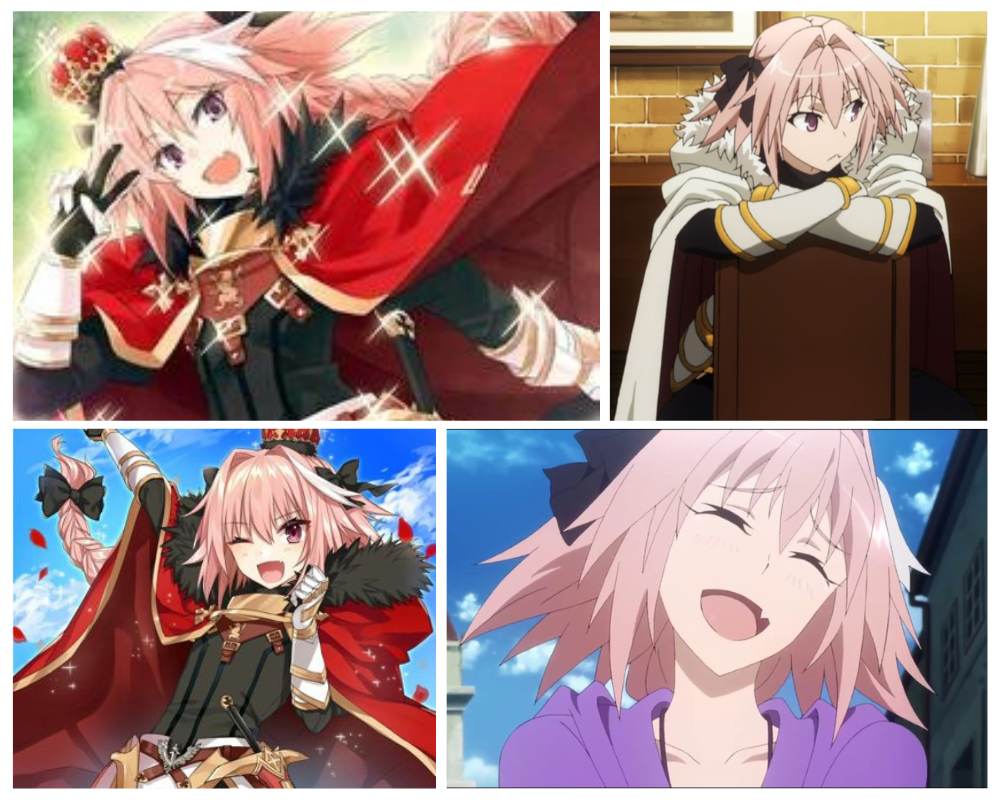Let’s talk about something that’s been making waves in the anime community—femboys in anime. If you’ve ever wondered what femboys are all about, why they’re so intriguing, or how they fit into the broader themes of gender identity, you’re in the right place. This isn’t just a trend; it’s a reflection of evolving cultural norms and diverse storytelling. So, grab your favorite drink, and let’s dive into this vibrant world!
When it comes to anime, diversity is the name of the game. From action-packed battles to heartwarming slice-of-life stories, anime has something for everyone. But one topic that’s gaining more attention lately? Femboys in anime. These characters are breaking barriers, challenging traditional gender roles, and bringing fresh perspectives to the table.
Now, I know what you might be thinking—“What exactly is a femboy?” Well, buckle up because we’re about to explore that question and so much more. Whether you’re a long-time anime fan or just curious about this phenomenon, this article is packed with insights, fun facts, and a deep dive into why femboys in anime matter.
Read also:Positive Marketing Usa The Ultimate Guide To Transforming Your Business
Table of Contents
- What Are Femboys in Anime?
- The History of Femboys in Anime
- Iconic Femboy Characters in Anime
- Gender Fluidity in Anime
- The Importance of Representation
- Femboys Across Different Anime Genres
- Community Reactions to Femboys
- The Future of Femboys in Anime
- Controversies Surrounding Femboys
- Final Thoughts
What Are Femboys in Anime?
Alright, let’s start with the basics. A femboy in anime refers to male characters who express themselves in traditionally feminine ways. This could mean wearing dresses, embracing makeup, or adopting mannerisms often associated with women. It’s all about self-expression and defying societal expectations. And hey, who doesn’t love a little bit of rebellion?
Now, here’s the kicker—femboys aren’t just one-dimensional characters. They’re complex individuals with their own stories, struggles, and triumphs. Some femboys in anime are openly gay, while others simply enjoy exploring different facets of their identity. The beauty of it all? There’s no one-size-fits-all definition.
In short, femboys in anime remind us that identity is a spectrum. And isn’t that something worth celebrating?
Defining the Term “Femboy”
Before we go any further, let’s break down what “femboy” really means. At its core, a femboy is someone who identifies as male but embraces femininity in their appearance or behavior. In anime, this can take many forms—from characters who cross-dress for fun to those who fully embrace their feminine side as part of their identity.
And guess what? This isn’t new. The concept of femboys has been around for decades, even if the term itself hasn’t always been used. Think about classic anime like Sailor Moon or Ranma ½, where characters blur the lines between masculinity and femininity. It’s a theme that’s been woven into the fabric of anime for years.
The History of Femboys in Anime
Let’s rewind the clock and take a trip down memory lane. The history of femboys in anime is as colorful as the characters themselves. From early experiments with gender-bending themes to modern-day masterpieces, this evolution is nothing short of fascinating.
Read also:Luis Enrique Singer Wife The Love Story Behind The Music Icon
Back in the day, femboys were often portrayed as comedic relief. Think of characters like Harima Kenji from School Rumble, whose obsession with dressing up as a girl was played for laughs. While these depictions weren’t always respectful, they laid the groundwork for more nuanced portrayals in the future.
Fast forward to today, and we’re seeing a shift toward more authentic representation. Modern anime like My Dress-Up Darling and Blue Period tackle femboy themes with sensitivity and depth. It’s a sign that the industry is growing and maturing alongside its audience.
Early Examples of Femboys in Anime
Some of the earliest examples of femboys in anime date back to the 1980s and 1990s. Shows like Ranma ½ and Urusei Yatsura featured characters who frequently swapped genders, often leading to hilarious misunderstandings. While these stories were more about comedy than serious exploration, they introduced audiences to the idea of gender fluidity.
As time went on, anime began to delve deeper into these themes. Series like Princess Jellyfish and Given showcased femboys in more meaningful ways, exploring their inner lives and relationships. It’s a testament to how far we’ve come in terms of representation.
Iconic Femboy Characters in Anime
Okay, let’s talk about the stars of the show—the femboy characters themselves. These guys (and gals) are the ones making waves in the anime world. From fan favorites to underappreciated gems, there’s no shortage of incredible femboys to discover.
Take, for example, Kotonoha Tsurugi from My Dress-Up Darling. He’s a fashion enthusiast who creates stunning outfits, proving that passion knows no gender. Or how about Ren Ichinose from Blue Period, whose journey into the world of art challenges traditional masculine stereotypes?
And let’s not forget about classics like Harima Kenji or even more recent additions like Koyomi Araragi from Bakemonogatari. Each character brings something unique to the table, showcasing the diversity of femboy representation in anime.
Character Analysis and Backstories
What makes these femboy characters so compelling? It’s not just their looks—it’s their stories. Take Kotonoha Tsurugi, for instance. His love for fashion stems from a deep desire to express himself, even when it means going against societal norms. His journey is one of self-acceptance and creativity, resonating with viewers on a personal level.
Then there’s Ren Ichinose, whose passion for art leads him to explore themes of beauty and identity. His character development is a testament to how femboys in anime are becoming more than just stereotypes—they’re fully realized individuals with dreams and aspirations.
Gender Fluidity in Anime
Now, let’s tackle a big topic—gender fluidity. Anime has always been a space for exploring unconventional ideas, and gender fluidity is no exception. Through femboy characters, we see a world where identity isn’t confined by rigid boundaries.
This isn’t just about fashion or appearance—it’s about embracing who you truly are. Characters like Kotonoha and Ren show us that gender is a spectrum, and there’s beauty in exploring all its facets. It’s a powerful message that resonates with audiences around the globe.
And guess what? Research shows that representation matters. Studies have found that seeing diverse characters in media can reduce prejudice and promote understanding. Anime is leading the charge in this regard, offering viewers a chance to see the world through different eyes.
Exploring Identity Through Anime
So, how does anime tackle the complex topic of identity? By giving characters the space to grow and evolve. In shows like My Dress-Up Darling, we see characters grappling with questions of self-acceptance and societal expectations. It’s a journey that mirrors real-life experiences, making it relatable and impactful.
Moreover, anime often uses visual storytelling to convey these ideas. Through stunning animation and thoughtful dialogue, creators can explore themes of identity in ways that words alone can’t capture. It’s a testament to the medium’s power and versatility.
The Importance of Representation
Representation is key when it comes to femboys in anime. For many viewers, seeing characters who reflect their own experiences can be life-changing. It’s about more than just entertainment—it’s about validation and belonging.
Studies have shown that diverse representation in media can improve mental health outcomes, particularly for marginalized communities. When people see themselves reflected in the stories they consume, it reinforces the idea that they matter. That’s why femboys in anime are so important—they’re not just characters; they’re role models.
And let’s not forget the impact on younger audiences. For teens and tweens who might be exploring their own identities, seeing femboys in anime can provide a sense of comfort and understanding. It’s a reminder that it’s okay to be who you are, no matter what society says.
The Impact on Viewers and Fans
So, what does this mean for the fans? It means that femboys in anime are more than just entertainment—they’re a source of inspiration and empowerment. Whether you’re a long-time fan or just discovering the genre, these characters have the power to change the way you see yourself and the world around you.
And the best part? The conversation doesn’t stop with anime. Fans are taking these ideas and applying them to their own lives, creating a ripple effect of positivity and acceptance. It’s a beautiful thing to witness.
Femboys Across Different Anime Genres
One of the coolest things about femboys in anime is how they transcend genre boundaries. Whether it’s action, romance, or slice-of-life, femboys are making their mark across the board.
In action-packed series like Bleach, we see characters like Yumichika Ayasegawa, whose love for beauty and aesthetics adds a unique dimension to the story. Meanwhile, in romantic comedies like My Dress-Up Darling, femboys bring a fresh perspective to love and relationships.
Even in more serious genres like psychological thrillers, femboys are finding their place. Shows like Paranoia Agent explore themes of identity and societal pressure through nuanced characters who defy expectations.
Exploring Genre Diversity
Why does this matter? Because it shows that femboys aren’t limited to one type of story. They can exist in any setting, bringing their unique perspectives to every genre. It’s a sign that the anime industry is embracing diversity in all its forms.
And for viewers, it means there’s something for everyone. Whether you’re into high-stakes battles or heartfelt moments, there’s a femboy character out there waiting to captivate you.
Community Reactions to Femboys
Of course, no discussion about femboys in anime would be complete without talking about the community’s reaction. Like any cultural phenomenon, there’s a mix of opinions out there. Some fans are thrilled to see more diverse representation, while others might be resistant to change.
But here’s the thing—change is inevitable, and it’s often for the better. As the anime community grows and evolves, we’re seeing more acceptance and understanding. Fans are embracing femboy characters with open arms, recognizing the value they bring to the table.
And let’s not forget the power of online communities. Platforms like Reddit, Twitter, and Discord are filled with passionate discussions about femboys in anime. It’s a space where fans can share their thoughts, ask questions, and learn from one another.
The Role of Online Discussions
Online discussions play a crucial role in shaping how femboys are perceived in the anime world. They provide a platform for fans to express their views, challenge stereotypes, and celebrate diversity. It’s a space where everyone’s voice matters, and that’s something worth celebrating.
Moreover, these discussions help drive the conversation forward. By engaging with one another, fans can push for even better representation in future anime. It’s a cycle of growth and learning that benefits everyone involved.
The Future of Femboys in Anime
So, what does the future hold for femboys in anime? The possibilities are endless. As the industry continues to evolve, we’re likely to see even more diverse and nuanced portrayals of femboy characters. From groundbreaking new series to fan-favorite revivals, there’s plenty to look forward to.
And let’s not forget the impact of technology. With advancements in animation and storytelling, creators have more tools than ever to bring these characters to life.

![[Miburi (Miga)] Josouko Bon Femboy Book [Eng]](https://bucket.doujindojo.com/doujindojo.com/miburi-miga-josouko-bon-femboy-book-eng/miburi-miga-josouko-bon-femboy-book-eng_3.webp)
